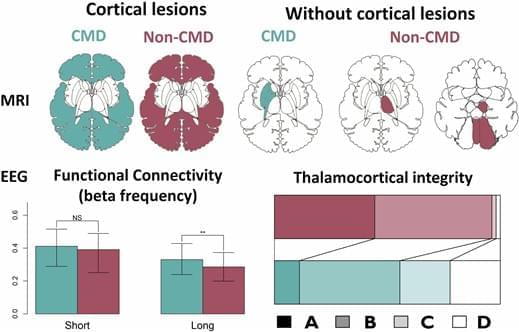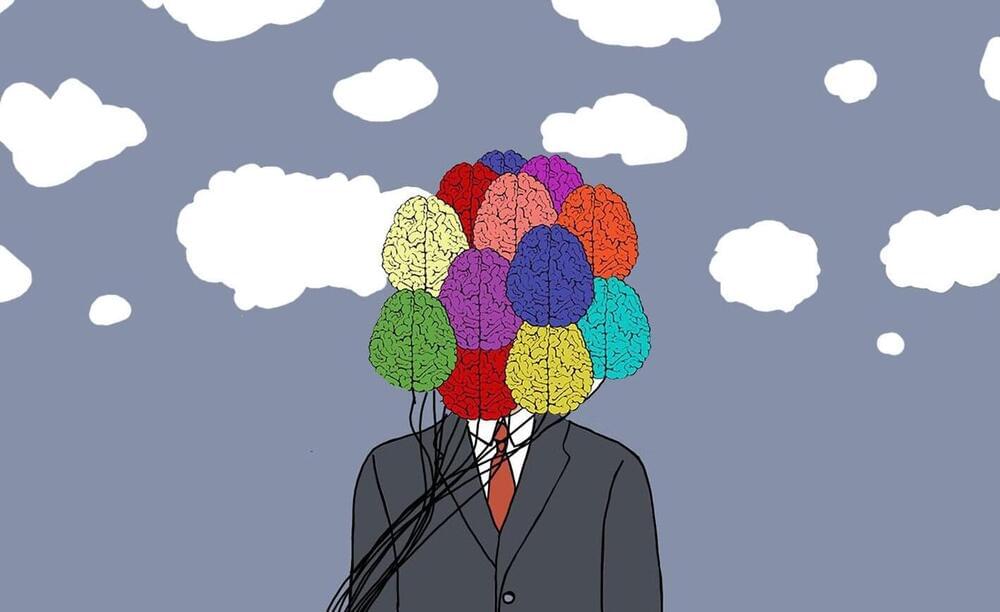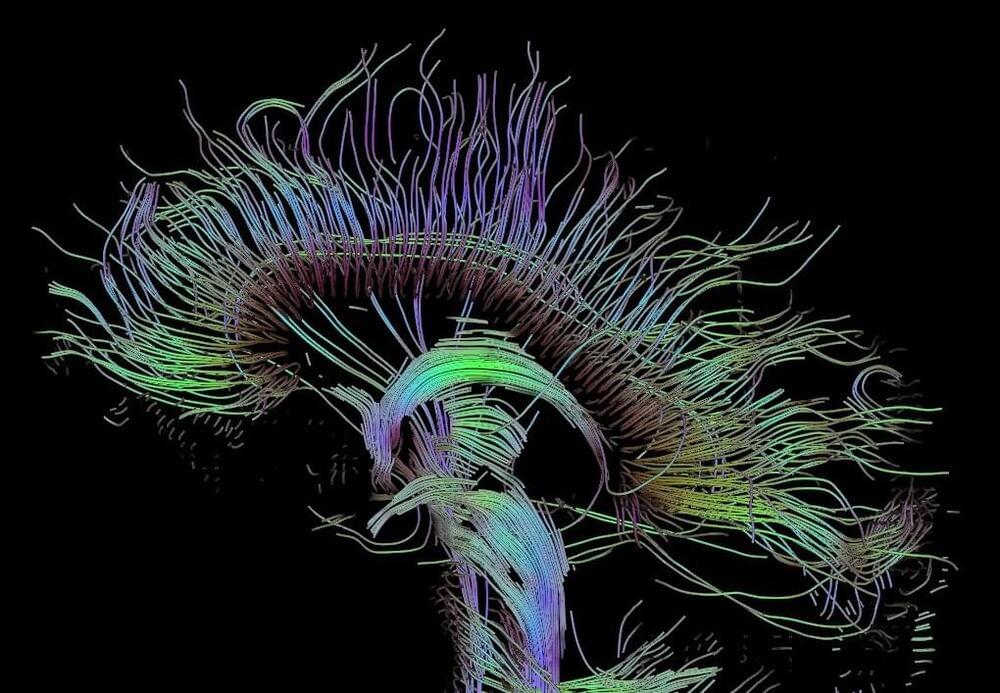Franzova and Shen et al. report that unresponsive patients with cognitive motor dissociation have intact ascending arousal pathways, preserved thalamocortical f.



Neuroscientists today report the first results from experimental tests designed to explore the idea that “forgetting” might not be a bad thing, and that it may represent a form of learning—and outline results that support their core idea.
Last year the neuroscientists behind the new theory suggested that changes in our ability to access specific memories are based on environmental feedback and predictability. And that rather than being a bug, forgetting may be a functional feature of the brain, allowing it to interact dynamically with a dynamic environment.
In a changing world like the one we and many other organisms live in, forgetting some memories would be beneficial, they reasoned, as this can lead to more flexible behavior and better decision-making. If memories were gained in circumstances that are not wholly relevant to the current environment, forgetting them could be a positive change that improves our well-being.

The research, published in Proceedings of the National Academy of Sciences, used a genetic approach to fix deafness in mice with a defective Spns2 gene, restoring their hearing abilities in low and middle frequency ranges. Researchers say this proof-of-concept study suggests that hearing impairment resulting from reduced gene activity may be reversible.
Over half of adults in their 70s experience significant hearing loss. Impaired hearing is associated with an increased likelihood of experiencing depression and cognitive decline, as well as being a major predictor of dementia. While hearing aids and cochlear implants may be useful, they do not restore normal hearing function, and neither do they halt disease progression in the ear. There is a significant unmet need for medical approaches that slow down or reverse hearing loss.
New research from the Institute of Psychiatry, Psychology & Neuroscience (IoPPN) at King’s College London has successfully reversed hearing loss in mice.
This proof-of-concept study suggests that gene therapy for this type of hearing loss in humans may be successful in the future.

Brain-computer interfaces are devices that allow for direct communication between the brain and external devices, such as computers or prosthetics. As significant investments flow into R&D, cutting-edge companies are gearing up for human trials. These trials aim to showcase and fine-tune the potential of these interfaces to treat conditions such as Parkinson’s disease, epilepsy and depression.
While these technologies’ immediate use is for treating conditions, they also have the potential to access vast information at unprecedented speeds. As it stands today, the field not only aims to aid recovery, but also enhance existing cognitive functions. These goals introduce various ethical and… More.
Can cutting-edge technology transform the way humans learn, remember and evolve?

Older adults with more severe behavioral symptoms, including agitation, aggression, and disinhibition, are more likely to become divorced than those with less severe symptoms. However, increasing stages of dementia are associated with a low likelihood of divorce. These are some of the conclusions of a new study published August 16 in the open-access journal PLOS ONE by Joan Monin of the Yale School of Public Health and colleagues.
In recent years, divorce has been on the rise among older adults. Moreover, dementia can be difficult for married couples for many reasons, including the introduction of caregiving burden, loss of intimacy, and financial strain.
In a new study, researchers analyzed data from 37 NIA/NIH Alzheimer’s Disease Research Centers (ADRCs) across the US. The final study included 263 married or living-as–married couples who were divorced or separated during their follow up period at an ADRC, as well as 1,238 age-matched controls.
Since 2014, the ALS Ice Bucket Challenge has inspired more than 17 million people to raise $115 million for The ALS Association, which has funded over 500 research projects with the money. Because of that boost, the first drug to treat ALS has been approved by the FDA, other new treatments are in testing, and scientists have been able to identify several genes that are connected to the disease.
While mutations in a gene called NEK1 have only been associated with around two percent of ALS cases, it is one of the primary genetic causes of ALS that have been revealed so far. Now investigators have learned more about how NEK1 mutations can lead to ALS, a disease in which the motor neurons that control movement degenerate and die, which causes paralysis and eventually, death. The work has been reported in Science Advances.

Researchers at the National Heart, Lung, and Blood Institute at NIH, Bethesda, have discovered a potential breakthrough for people with myalgic encephalomyelitis/chronic fatigue syndrome (ME/CFS), marked by extreme exhaustion, post-exertional malaise and cognitive issues.
In a paper, “WASF3 disrupts mitochondrial respiration and may mediate exercise intolerance in myalgic encephalomyelitis/chronic fatigue syndrome,” published in PNAS, the team details the influence of increased WASF3 proteins on the assembly of mitochondrial proteins, hampering energy production.
The study focused on a woman (S1) who experienced severe long-term fatigue. Measuring her muscles for phosphocreatine regeneration after exercise revealed a significant delay in mitochondrial ATP synthesis capacity. This discovery was followed up with a cell assay which found increased phospho-activation of an enzyme in a signaling pathway (MPAK).

I’d heard that fear of the dark is a protein, Scotophobin A, which can be isolated from the brains of rats. My Chemistry teacher told us that 1-hexanol smelled like cut grass. I watched her draw it once, on the whiteboard. A colorless liquid that, I imagined, smelled like memory, summer term, sports day, an army of ants cresting the summit of a picnic blanket, damp loam after rain.
I’d hoped that studying neuroscience would teach me all about things like that. I imagined watching sunlight refract through a conical flask, some clear liquid roiling inside. “Fear of abandonment is a sequence of seventeen peptides,” our lecturer might say, “isolated from the muscles of the heartbroken.”
“Look here,” he would say, pointing to another vial. “We can synthesize these things in a lab now. This one is awe.”
Scientists working in connectomics, a research field occupied with the reconstruction of neuronal networks in the brain, are aiming at completely mapping of the millions or billions of neurons found in mammalian brains. In spite of impressive advances in electron microscopy, the key bottleneck for connectomics is the amount of human labor required for the data analysis. Researchers at the Max Planck Institute for Brain Research in Frankfurt, Germany, have now developed reconstruction software that allows researchers to fly through the brain tissue at unprecedented speed. Together with the startup company scalable minds they created webKnossos, which turns researchers into brain pilots, gaining an about 10-fold speedup for data analysis in connectomics.
Billions of nerve cells are working in parallel inside our brains in order to achieve behaviours as impressive as hypothesizing, predicting, detecting, thinking. These neurons form a highly complex network, in which each nerve cell communicates with about one thousand others. Signals are sent along ultrathin cables, called axons, which are sent from each neuron to its about one thousand “followers.”
Only thanks to recent developments in electron microscopy, researchers can aim at mapping these networks in detail. The analysis of such image data, however, is still the key bottleneck in connectomics. Most interestingly, human annotators are still outperforming even the best computer-based analysis methods today. Scientists have to combine human and machine analysis to make sense of these huge image datasets obtained from the electron microscopes.

Seemingly countless self-help books and seminars tell you to tap into the right side of your brain to stimulate creativity. But forget the “right-brain” myth—a new study suggests it’s how well the two brain hemispheres communicate that sets highly creative people apart.
For the study, statisticians David Dunson of Duke University and Daniele Durante of the University of Padova analyzed the network of white matter connections among 68 separate brain regions in healthy college-age volunteers.
The brain’s white matter lies underneath the outer grey matter. It is composed of bundles of wires, or axons, which connect billions of neurons and carry electrical signals between them.